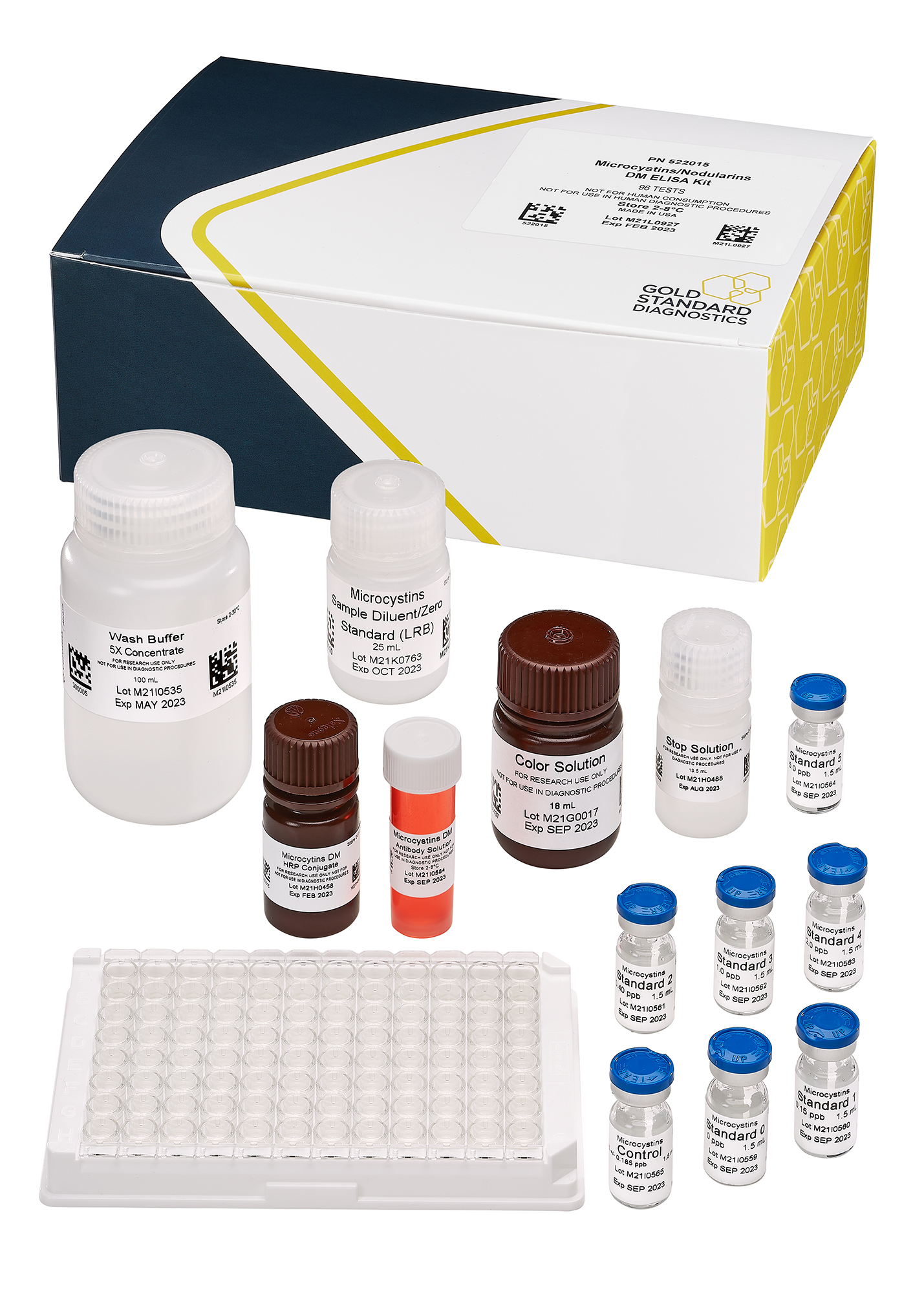ABRAXIS® Microcystins/Nodularins DM (EPA ETV) (CCL4), ELISA, 96-test
Request InfoThe Microcystins (ADDA)-DM (direct monoclonal) ELISA is an immunoassay for the quantitative and sensitive detection of Microcystins and Nodularins in water samples. This test is suitable for the quantitative and/or qualitative detection of Microcystins and Nodularins in water samples [please refer to the appropriate technical bulletins for sample collection, handling, and treatment of drinking (treated and untreated) and recreational water samples]. If necessary, positive samples can be confirmed by HPLC, protein phosphatase assay, or other conventional methods. The test is a direct competitive ELISA for the detection of Microcystins and Nodularins. It is based on the recognition of Microcystins, Nodularins, and their congeners by a monoclonal antibody. Toxin, when present in a sample, and a Microcystins-HRP analogue compete for the binding sites of anti-Microcystins antibodies in solution. The anti-Microcystins antibodies are then bound by a second antibody (goat anti-mouse) immobilized on the wells of the microtiter plate. After a washing step and addition of the substrate solution, a color signal is generated. The intensity of the blue color is inversely proportional to the concentration of Microcystins present in the sample. The color reaction is stopped after a specified time and the color is evaluated using an ELISA reader. The concentrations of the samples are determined by interpolation using the standard curve constructed with each run.
Learn more about our Algal Toxin Proficiency Testing Program
PN 522015
Format: 96-Well Plate ELISA
